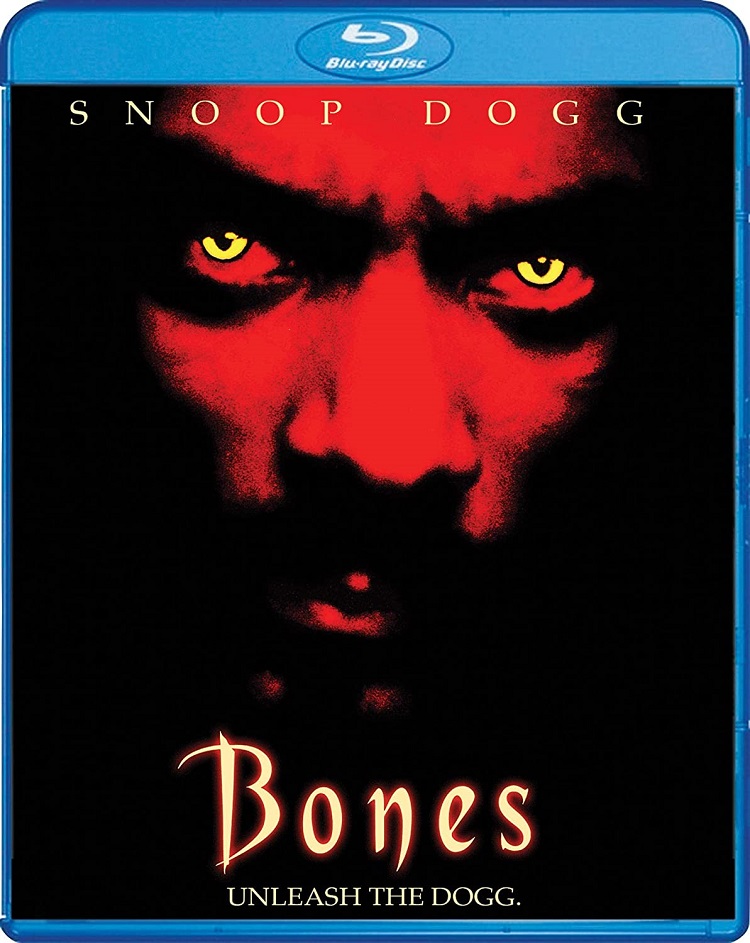
Bones bores.
Director Ernest Dickerson, Spike Lee’s former DP, pulls off a few nifty visual tricks. Chief among them are a black dog that projectile-vomits maggots, and a bulging wall of flesh that embodies a nightmarish depiction of hell.
But we spend the first hour waiting for something to happen, for someone to root for.
An enterprising, multi-racial group of young adults renovates a gothic brownstone in the hood. Their plan is to turn it into a nightclub. Little do they know the building once belonged to Jimmy Bones (Snoop Dogg), a murdered pimp who refused to sell crack to the neighborhood over which he was a benevolent king.
I will spare you the spoilers. Eventually, though, Jimmy Bones’ skeletal remains regain life. At that point, the film starts to cook, but Snoop Dogg cannot act. A svelte-looking cat in mack-daddy digs, he comes calling on everyone that betrayed him: A fat, disgusting white cop (Michael T. Weiss), a rival pimp (Ricky Harris, who was memorable in Michael Mann’s Heat), a manservant-turned-lush (Ron Selmour), a palm reader who bore him a daughter (Pam Grier), and an uppity friend (Clifton Powell) who sold him out to the pimp and the cop.
Part of the film’s fun is the way it dispatches these characters. And you can see the actors care; you can tell most of them want to imbue this film with fun, with flash.
But Dickerson lacks the panache of the Italian horror maestros, Mario Bava and Dario Argento, to whom he owes a clear debt. (Dig Dickerson’s work, though, on AMC’s The Walking Dead.) Those guys brought a weird, almost perverted sense of opera chic to their best work. Dickerson, by comparison, does not seem to have an in-built vision of his own. He makes Bones a slick-looking tribute of sorts, but all it does is make me want to see Black Sunday, or Deep Red, again. Talented though he is—visually, the total effect here is trippy, and the brownstone is striking as all get-out—he does not breathe any real life into Bones.
I wanted more; or, less. Spare me the hip young cats reciting bad dialogue. Give me adult characters trying, and failing, to staunch their guilt, their grief. Selmour and Powell bring some of that energy, but it cannot overcome the script’s faulty sense of structure. Its overreliance on humor. I want more scenes of Snoop lording over his hood, more drawing out of suspense. If the film wants to lean on the ‘funny,’ give me more jive talk, something we catch in dribs and drabs. (I could not care less if the movie tried to say something deep about urban blight. Leave that to other artists.)
The film blends a divergent set of influences—A Nightmare on Elm St., Hellraiser, Candyman, just on the horror side, for starters—but does nothing interesting with them. It also wastes Grier, a good actor and a blaxploitation legend. (Or, just perhaps, Grier did her best.)
As an exercise in genre, specifically the blaxploitation horror subgenre, Bones is a curio. I like the funhouse aspect it brings. Done right, movies like this can supply a form of release. But Bones should have been darker, sicker; should have played it a lot less safe. And as a vehicle for Snoop Dogg, exterminating angel in black duds, it falls flat. (I am not sure how, but Snoop manages to make Jimmy Bones a slightly sympathetic character. Is it because he was high for most of these scenes, even when the character is supposed to be scary, giving him a kind of mellow vibe?) That is all Bones amounts to, though—a New Line Cinema assignment for Dickerson to prove himself on, and mostly forgettable at that.
Including the gross-outs already mentioned, the movie shows promise. Had it been nastier, had it been sexier and more straight-faced, it might have been something. Had it left a bit more to the imagination and pumped the brakes on the conventional inserts that make it feel like a marketing team dream, Bones would have scored. As it is, it feels gentrified, a terrible, terrible irony.
The Scream Factory Blu-ray treats Bones like an unjustly maligned lost classic, God bless them. Features are akimbo: among vintage behind-the-scenes featurettes, the disc treats us to present-day interviews with Dickerson, co-scenarist Adam Simon, cinematographer Flavio Labiano, and FX artist Tony Gardner. (Dickerson seems resigned about the film’s commercial underperformance.) There is also audio commentary from Snoop Dogg, Ernest Dickerson, and Adam Simon.